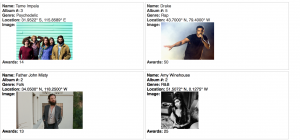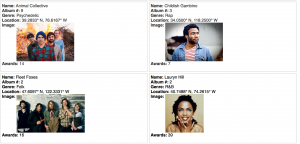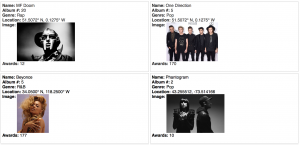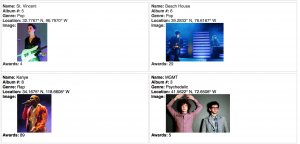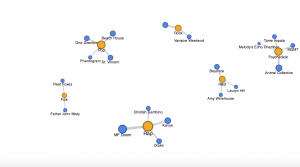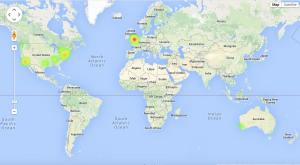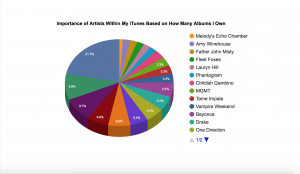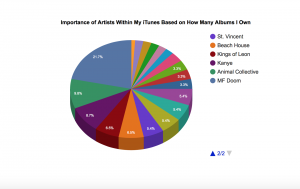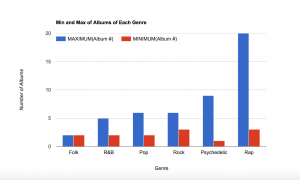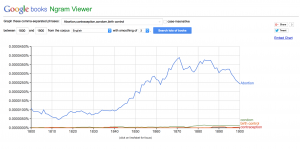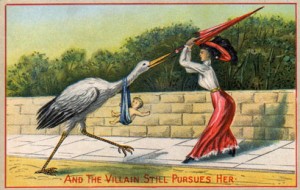Here’s a link to Liz and Rachel’s website!
Author: dragane1
London Locations – 49 Great Russell Street, Museum Tavern, Alpha Inn
Figure 1: View of 49 Great Russell Street on Victorian Google Maps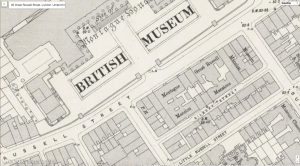
Figure 2: Google Maps screenshot of Museum Tavern as of today 
Figure 3: Charles Booth Online Archive screenshot of 49 Great Russell Street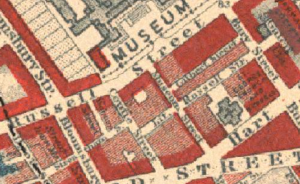

From what we know about the 49 Great Russell Street, or the Alpha Inn, (now known as the Museum Tavern because of the popularity from museum goers) from the Blue Carbuncle is that Henry Baker had purchased the goose, unknowing of the precious gem inside, from the Alpha Inn near the British Museum. From the Charles Booth Online Archive (Figure 3) we can tell that everywhere around the museum was middle to upper middle class, telling us that everyone living around there was very comfortable financially. This tells us about Henry Baker, knowing that he could afford to buy a (probably) pricey goose from the Inn. The goose must have been a well kept one, or it’s original seller must have been a middle class person to have the ability to sell in that area, around the upper class people. According to an article on the British History website, a very wealthy and talented artist and scientist Benjamin Wilson lived on Great Russell Street for the ending of his life in the 1700s, giving us insight that significant people who can afford to live on this street have been doing so for a hundred years (Nos. 55 and 56, Great Queen Street). From a court preceding in Old Bailey’s Archive made in 1811, John Jones was a poulterer on Great Russell Street who had some product stolen from him (“John Jones, theft”). This is very interesting information because in the original Holmes story, a piece of poultry was sold on that street, giving the readers information that Great Russell Street is a popular market, and one good enough to steal from. This is important because Sir. Arthur Conan Doyle wanted to put Sherlock into current context so his readers could relate to the story, and give Sherlock a more real feel.
Works Cited
“John Jones, Theft, October 30th 1811 (t18111030-79).” Old Bailey Proceedings Online Web. November 8. 2015. http://www.oldbaileyonline.org/browse.jsp?id=t18111030-79&div=t18111030-79&terms=+Great%20+Russell%20+Street%20#highlight
‘Nos. 55 and 56, Great Queen Street.’ Survey of London: Volume 5, St Giles-in-The-Fields, Pt II. Ed. W Edward Riley and Laurence Gomme. London: London County Council, 1914. 42-58. British History Online. Web. 6 November 2015. http://www.british-history.ac.uk/survey-london/vol5/pt2/pp42-58.
Google Fusion Tables: A Comparison Between My Favorite Bands and Their Success
Here’s a link to my Google Fusion Table
Default Cards
Network Visualization
This shows the connection between artist and genre weighting them by how many albums I have in my iTunes library, showing what genres are most influential to me. (I don’t know why the one bubble in Rock doesn’t label Kings of Leon as the artist).
Maps
Weighted by Number of Albums (in my iTunes)
Weighted by Number of Awards
Pie Chart
(Continued because the list of artists didn’t fit the page)
Bar Chart
WeVideo Introduction!
Sex in the Victorian Era according to Google Ngram
I’m interested on the difference in cultural views on sex in the Victorian Era and so I thought Google Ngram’s would help me find an answer to that. (I know this is redundant but for the comparisons of data purposes but,) in our day and age, abortion is fully legal and is done quite frequently but is still a hot topic. The split on whether it’s moral or not is what causes tension against it. But as for birth control, condoms or general contraception, it is highly recognized and appreciated. Although in some cases and in some specific areas, if a woman is on birth control she’s predicted to get around a lot, or if a married woman is using birth control there’s something wrong because she should be having children. But from what I can tell of the graph it’s very different.
The most activity is from abortion, which from what I read has been a well known practice for many centuries. But the Catholic church denounced it and condemned it as a sin. So that made it a taboo subject, and illegal in many Christian nations for a while, including the British Empire in the 1800-1900s (Joffe). What I’m interested in is why the spark in the late 1840s? What made the word come up more? My thoughts are that it became a serious topic of discussion then. But what’s interesting is that although there is not a lot of activity for the words condom, birth control and contraception, they all do spark up around the same time, which leads me to believe that the beginning of typical and most importantly safe, birth control was starting to make it’ debut in this time period (Hanson). As for condoms, they were the most popular of the contraceptives, and were promoted quite often after sexually transmitted diseases were spread in the after mass of the American Civil War, and England followed suit. What was encouraged often was DIY condoms, which came with instruction manuals (Collier).
But what is most interesting of this graph is that when the contraceptives spark, the abortion line goes down, and I’m sure if the graph were to continue from 1800-2000, the line would have gradually declined. It’s really interesting to see how it worked out like that.
(Apparently this is a Victorian postcard satirizing birth control)
http://www.booktraces.org/book-submission-green-fields-and-running-brooks/
Works Cited
Collier, Aine (2007). The Humble Little Condom: A History. Amherst, NY: Prometheus Books. ISBN 978-1-59102-556-6.
Hanson, S.J.; Burke, Anne E. (21 December 2010). “Fertility control: contraception, sterilization, and abortion”. In Hurt, K. Joseph; Guile, Matthew W.; Bienstock, Jessica L.; Fox, Harold E.; Wallach, Edward E. The Johns Hopkins manual of gynecology and obstetrics (4th ed.). Philadelphia: Wolters Kluwer Health/Lippincott Williams & Wilkins. pp. 382–395. ISBN 978-1-60547-433-5.
Joffe, Carole (2009). “1. Abortion and medicine: A sociopolitical history”. In M Paul, ES Lichtenberg, L Borgatta, DA Grimes, PG Stubblefield, MD Creinin. Management of Unintended and Abnormal Pregnancy (PDF) (1st ed.). Oxford, United Kingdom: John Wiley & Sons, Ltd. ISBN 978-1-4443-1293-5. Archived from the original on 21 October 2011.
Book Traces Response – An Ode?
The book that I ran into in the PS section of the library is a book of poems by James W. Riley entitled Green Fields and Running Brooks. Skimming through the pages, I saw a bunch of poems with dates for titles, names, and a lot dedicated to months and seasons. The first annotation I saw was on page 51, apart of the poem entitled ‘A Dream of Autumn’. I could tell immediately it had that specific signature of a 19th century person, and I almost found it romantic when I read in that handwriting “only one”. Although the poem is a description of what the feeling of fall is, and how the author yearns for it, I feel that the “only one” is almost like a metaphor for someone who reminds them of fall, and the sentimental, beautiful, transitioning feeling that it brings. Maybe I’m overanalyzing and I’m just a hopeless romantic and this poem was to be read in a class say, and that was the “only one” the teacher was going to read.
The other annotations I found were underlinings in a poem titled ‘Elizabeth’ which I thought was very serendipitous of all people to find. Another reason I think that the “only one” annotation is with romantic intentions is because these underlinings are done in the same ink, and Elizabeth happens to be a poem seeming to mourn someone who has passed but holds sweet memories within the author.
This is important to have found because it let’s finders, like myself, let our imaginations run wild.. It can tell us the effect it had on readers in the appropriate setting. If we have the means of who took out this book in the past 100 years, we can learn about their lives, and what this book meant to them. I think stood as a personal book that someone owned and really enjoyed both of those poems. It gave me the chance to transport myself back in time to imagine what it could have been in this person’s shoes.
http://www.booktraces.org/book-submission-green-fields-and-running-brooks/
2000s Holmes Costume Comparisions
Items:
http://holmesiana.net/items/show/139
http://holmesiana.net/items/show/130
http://holmesiana.net/items/show/110
Collection:
http://holmesiana.net/collections/show/15
Exhibit:
http://holmesiana.net/exhibits/show/costumecomparisions/costumecomparisons2
Researching Victorian London
Lee Jackson’s Victorian Dictionary gives a range of various articles and writings created in that time period which gives anyone a look into what living in that time period consisted of. I started looking into women’s roles and the details such as etiquette, demeanour, etc. I found some things very interesting like in one drawing from a Punch article published in 1880 what women should dress like as they grow older, a kind of What Not To Wear of the day. It’s a little offensive because it shows a young woman at her prime, beautiful and dressed daintily and then another of what seems to be the same women, yet older, dressing more modestly, and has obviously lost her youth. The last is what a woman should be dressed as an old maiden, covered head to toe in black garments and almost looks like a widow and the caption says “As she might (and should) be”. Obviously here we see a very structured life that a women would have to live up to in this world. And in a way I can compare it with the world we live in today, there are standards on what girls should wear compared to young women, to middle aged women and then to the elderly. At least we don’t have any mainstream magazines outwardly bashing on them. Another article that was rather rude one, another from Punch that explains how women can now be employed in the Telegraph industry because “to talk as quickly as lightning is a luxury that the women have not yet been able to enjoy”. It explains how they can gossip and do whatever girly things they want to.. Thanks. One from Richard Carlile’s Every Women’s Book explains how if a women hasn’t married by the time she is 25, she starts sagging and withering away, because she has basically failed her only true task in life. Oh well. The last I looked over from Punch is a drawing of a single women trying to buy herself a single train ticket, and gets very offended when the clerk questions her. Obviously Punch had some hilarious pieces for the ages. I’ve never not hated a magazine more. All I learned was that women are good for nothing… But I didn’t expect a lot from 1800’s England.
Liz Dragan’s Introductory Post
Hi everyone!
I’m Liz Dragan, I’m an art history major and a freshman, and I make some pretty bomb chocolate chip cookies, I also enjoy Parks and Rec and The Office. #jimandpam
